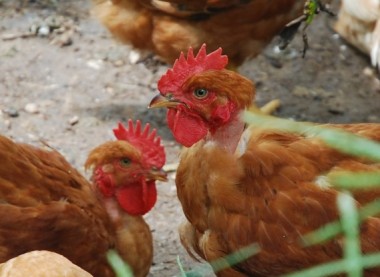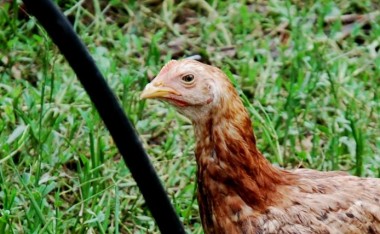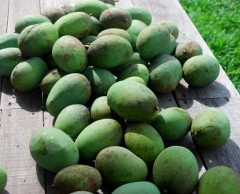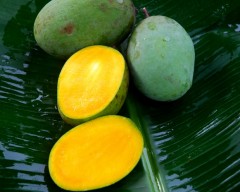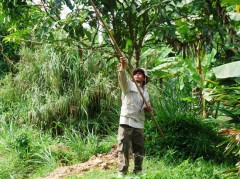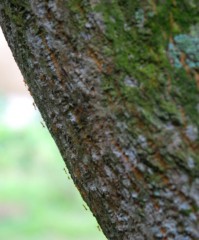Jul 04, 2017
Today at the Wild Farming Pilot #wildfarming
'Wild Farming' is a work-in-progress to mimic nature. On a vegetable plot, we will plant maybe 40% non-market plants, some with insect repellent properties, some that are just aromatic to confuse insects, etc., and 60% a mix of, or a variety of, market vegetables and plants. In our pilot plot here, the market vegetables are ridge gourd, brinjal, bird's eye chili, sweet corn and lady's fingers.
We are expecting some sweet corn next week; "GMO free some more" ![]()
Chilies should be plentiful next couple of weeks. Lady's fingers have started to produce. The terung has slowed a bit but we shall fix that with a compost dressing this couple of days. Over at the petola section, they are working overtime!
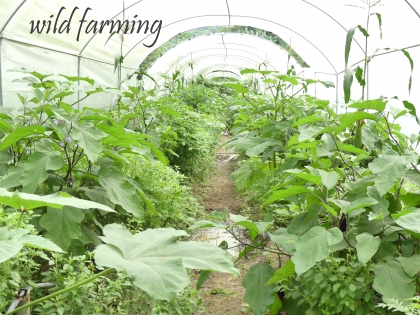
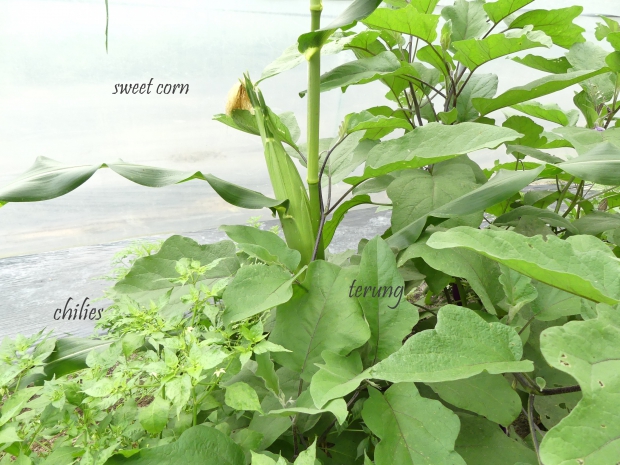

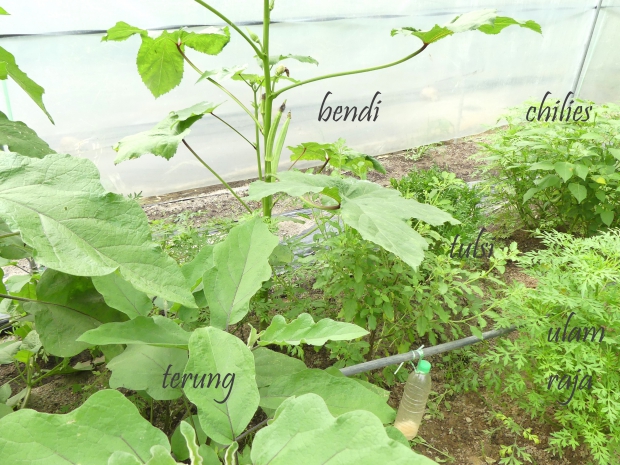
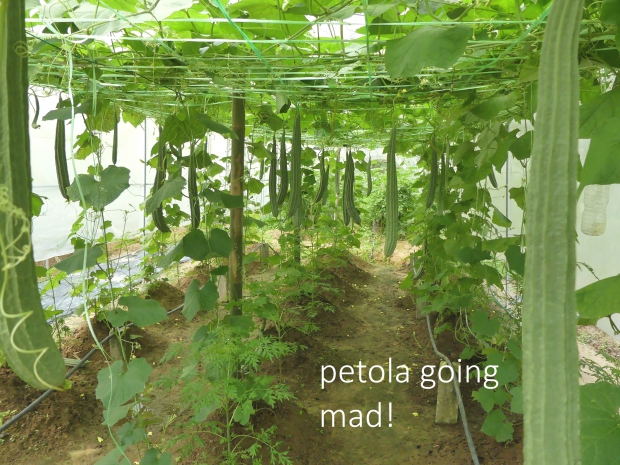
14:26 Posted in Nature Farming, Permaculture, Sustainable Farming, Wild Farming | Permalink | Comments (0) | Tags: wild farming, sustainable agriculture, organic farming
Apr 17, 2013
Useful Plants At The Farm - Sirihan, Piper Aduncum / Angustifolium
The early European explorers to South America must have thought this plant is so important they propagated it where ever they went. It is now found naturalised in most tropical parts of the world.
At our farm it is a valuable part of the natural remedies we have for our chickens.
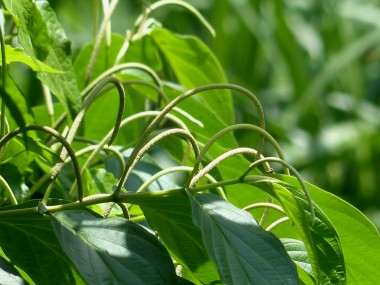
The inflorescence attracts squirrels, tree shrews and civets.
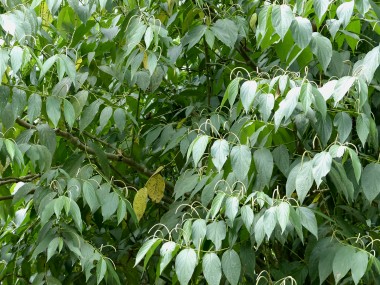
Like its cousin the green pepper vine, lots and lots of inflorescence.
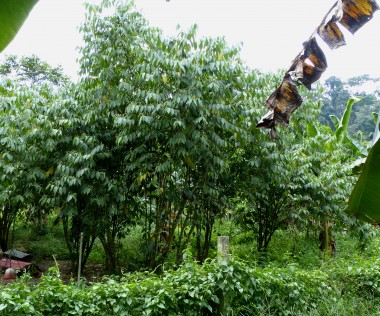
In the fields, they provide shade for the chickens but be careful, they are very invasive and will take over the entire padang!
Here's the technical information : Rain-Tree.com
Crush the leaves. If it has a slight peppery smell, you have the sirihan in your farm. Use it by pounding the leaves and squeezing out in a pail of water, or by decoction. Dosage is dependent on age and symptom.
12:02 Posted in Nature Farming, Sustainable Farming, Useful Plants | Permalink | Comments (0) | Tags: sirihan, piper aduncum, piper angustifolium, natural remedies for chickens
Apr 16, 2013
Free-Range Egg Model for Rural Farmers
This is the free-range layer model we intend to implement as a social enterprise with rural low-income farmers. If they sell the eggs themselves at the Farmers’ Market, each egg should fetch rm1.00 each. We will supply them 200 pullets that are close to laying unlike what is happening now when the poor farmers are given day-olds and in no time, disease will wipe out all the birds.
At the very least, the farmers can expect an income of between rm2500 to rm3000.00 per month.
We will be starting with five farmers in Pahang.
13:50 Posted in Blog, Chickens, Nature Farming, Permaculture, Sustainable Farming | Permalink | Comments (1) | Tags: free range egg laying model, free range eggs malaysia, organic eggs malaysia
Mar 15, 2013
The Yellow Birdwing, Troides helena, is now a resident
On the 1st day of this year we saw for the first time a single female Yellow Birdwing, Troides helena, flying fast at the perimeter of our farm, as if making an aerial survey.

From a distance, it looks like a bird
The Yellow Birdwing is protected by law and is becoming difficult to see in the wild due to loss of habitat and due to collectors.
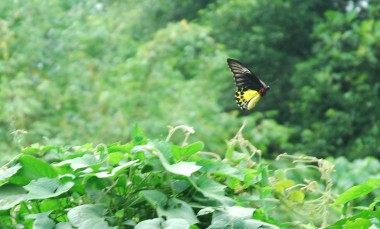
The female zooming past us on the 1st of January, 2013
Just barely 2 1/2 months later, they have made our farm their home. They are breeding and have become a familier sight. And interestingly, they show no fear of us. Also of interest to us is the fact that the farm has a larger share of birds than other places and yet they choose to breed here.
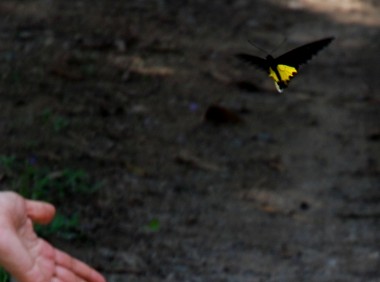
They show no fear of us
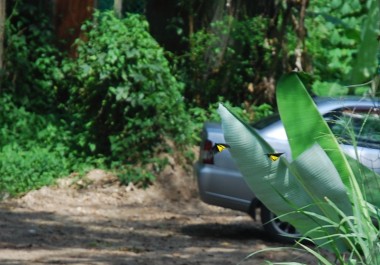
You won't find wild birdwings flying around your cars!
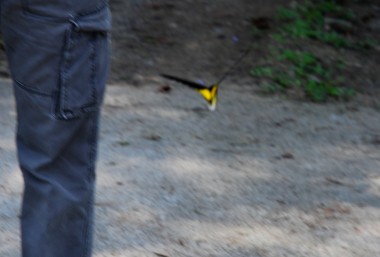
Flying close to us without fear.
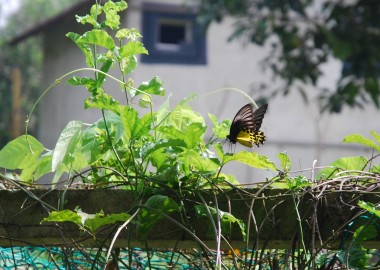
We leave fruits to ripen on the trees for birds and butterflies. Our workers are instructed not to feed nor to disturb nor to stare at the birds, and also the butterflies. We make as if they are non-existent. We plant their larval plants and we plant flowering vines that will bloom up in the canopy for the butterflies. And above all, no poison, no chemicals. We co-exists, and they so enrich our lives as farmers.
18:18 Posted in Blog, Nature Farming, Permaculture, Sustainable Farming | Permalink | Comments (0) | Tags: common yellow birdwing butterfly, troides helena, rare butterflies
Apr 02, 2012
Living (And Farming) With Nature
The farm is a bird sanctuary of sorts. This statement seems to be contradictory at first sight, but our farm is full of birds of various kinds (about 50 different species at last count). We can farm and yet we can live in harmony with wildlife.
If you want to have birds in your farm, you must not allow your workers to kill any bird, not even one.
Birds living in close proximity of each other will know if one dies, even of different species. A farm like ours is like a huge giant aviary. The birds are regulars, or have made their homes at the farm. If you kill one, all the rest will know of the death. After a few deaths, they will start to leave.
And why kill them? Look at the ‘enhancement’ they contribute to the farm environment:
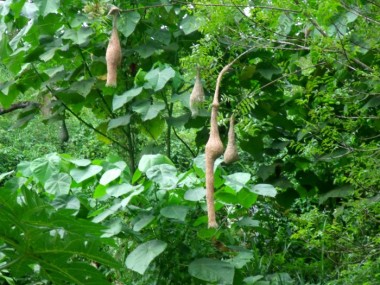
These are nests of weaver birds. They have made them hanging from a neem tree we planted in a chicken padang (field). At the background you can see one that’s green in color. The birds have quickly picked up the grass that we have cut to weave a nest. It will dry out gradually. These nests are the most effective against the many snakes that have made the farm their home too. It’s going to be tough for a regular snake to reach the entrance of the nest.
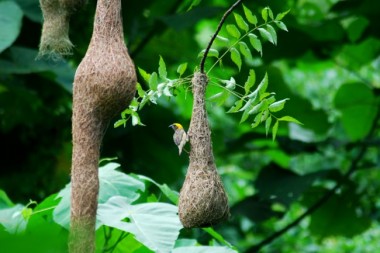
Experts say, birds will bring disease to a chicken farm. This has not been our experience (11 years now). All you need is the will to live with nature, and put to practice modern scientific knowledge about dieases. The costs involved is marginal. The benefits to bio-diversity and the ecology, immeasurable.
Spread the word; it can be done.
10:42 Posted in Blog, Nature Farming, Sustainable Farming | Permalink | Comments (0) | Tags: weaver birds, weaver bird nests, ploceus philippinus, burung tempua, baya weaver, co-existing with nature
Mar 09, 2012
Round Eyes, 'Long' Eyes
If you have a few thousand chickens running around, how do you know if some disease is starting?
In antibiotic-free poultry raising, it is extremely important that we catch problems fast. By the time the chicken shows obvious signs, the disease is well advanced and mortality can be high.
One of the fastest way we know of, especially if we are relying on workers, is to go like this first thing in the morning:
Farmer: How’s the chickens in Field Number 10?
Worker: OK, they are eating and running around.
Farmer: Are the eyes round?
Round Eyes
Worker: Most have round eyes. Some have 'long' eyes.
'Long' Eyes
Farmer: Out of 10 chickens, how many round, how many long?
Worker: 8 round, 2 long.
Round Eyes, 'Long' Eyes
20% of your chickens are showing signs of problems. You best head over to the field fast to see what’s the problem. First make sure the ‘long’ eyes is not due to physical eye problems.
Then, sacrifice a few chickens and examine the internal organs. Once you have narrowed down the possible causes, take the necessary action.
11:06 Posted in Chickens, Nature Farming, Sustainable Farming | Permalink | Comments (0) | Tags: free-range poultry, organic chicken farming, necropsy, poultry disease identification, chicken diseases
Jun 07, 2010
Nature Farming - Kuini
You don't find many kuini (mangifera odorata) in the market. Part of the reason is that the tree is not very productive as far as commercial farmers are concerned. For the same amount of fertiliser, pesticides and labour, the production is significantly less for the kuini tree as compared to other commercial hybrid mangoes.
Kuini trees in a row
Pak Din plucking the fruits
Another reason is that the weevils love kuini and losses can be high, unless one really go the 'overkill' path and spray pesticides copiously.
At DQ Farm we use nature to help us. And nature works 24/7 without rest.
Vicious red ants swarming entire trees from root to fruit, keeping the fruits free from weevils and other insects.
Red ants swarming a fallen fruit protecting it from insects:
buah macang buah kuini
masak sebiji dalam daun
mengapa begini hatiku ini
habis bulan berganti tahun
My translation:
the kuini the machang
fold one in leaves to ripen
this heart of mine, oh what's hidden
a year passes with each fading month
10:42 Posted in Nature Farming | Permalink | Comments (3) | Tags: nature farming, organic farming, kuini, mango farming, mangifera odorata
Jul 23, 2009
Nature Q-Farming And Durians
This year, the damage to the durians from fungus is less than 5%. A couple of years back, the damage was 30%. The supervisor at that time could not learn how to do the qi-compost right and we did not use the Teh Qi. His breathing was all wrong.
Ali, my current supervisor is a picture of amazement and just cannot understand what's happening.
He keeps on asking, how come the Teh Qi (Qi Tea) can do this? What is inside the Teh Qi that can reduce the fungal attacks by so much?
Ah Tick, the man who actually takes care of the durians for us on a daily basis says that the degree of damage is the same as those durian farms that use chemicals RIGHT UP TO THE LAST MINUTE OF HARVEST. He himself owns 8 acres of durians. He says, because of the low prices, farmers must ensure that every fruit survives, so they spray until the durian drops. So if you buy conventionally grown durians, make sure you wash your hands after opening the durians before taking hold of the pips to eat.
The Teh Qi is unique, it provides the full compendium of microbes that plants need PLUS it vibrates with energy that gives plants that little extra edge between infested with fungus or being disease free, ceteris paribus.
The next problem Ali and Ah Tick wants Nature Q-Farming to solve is the issue of uneven ripening, especially the D24 variety. This is a problem with unknown causes that farms from Thailand to Australia face. I told them, it's not a problem. Come next season, Nature Q-Farming will reduce that problem by 70%, I promised.
12:32 Posted in Nature Farming | Permalink | Comments (0) | Tags: qi gong, chi kung, nature farming, durians








